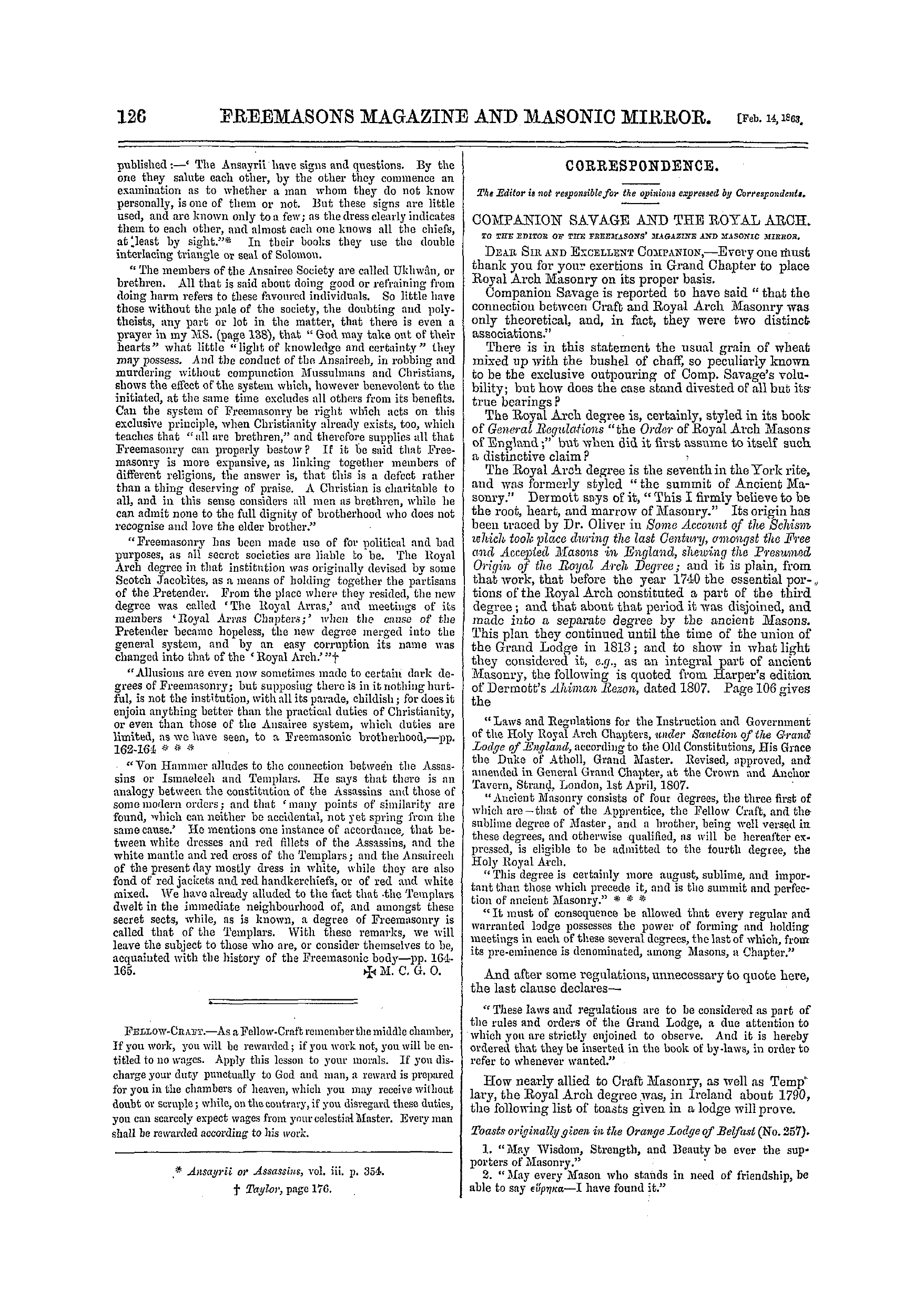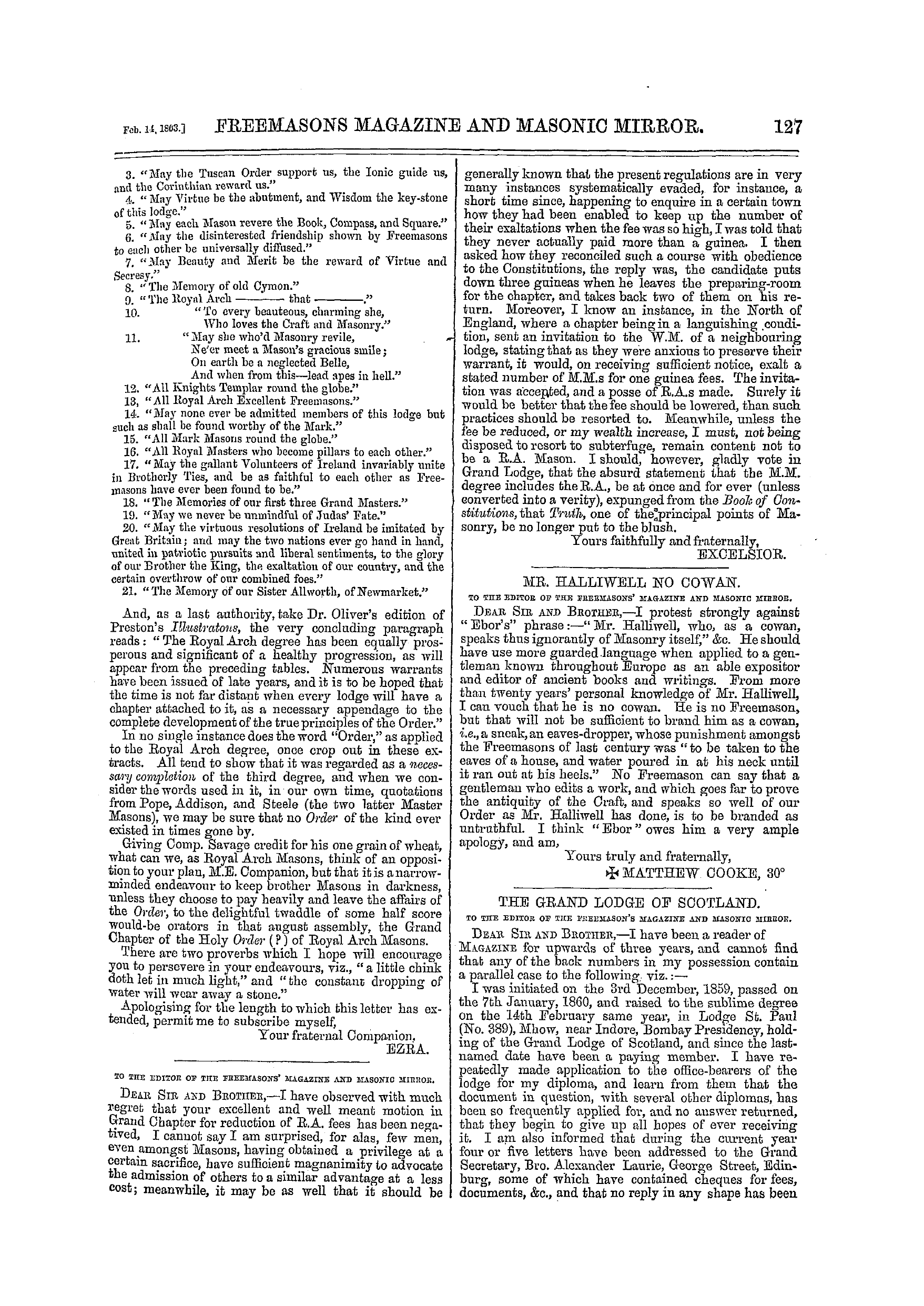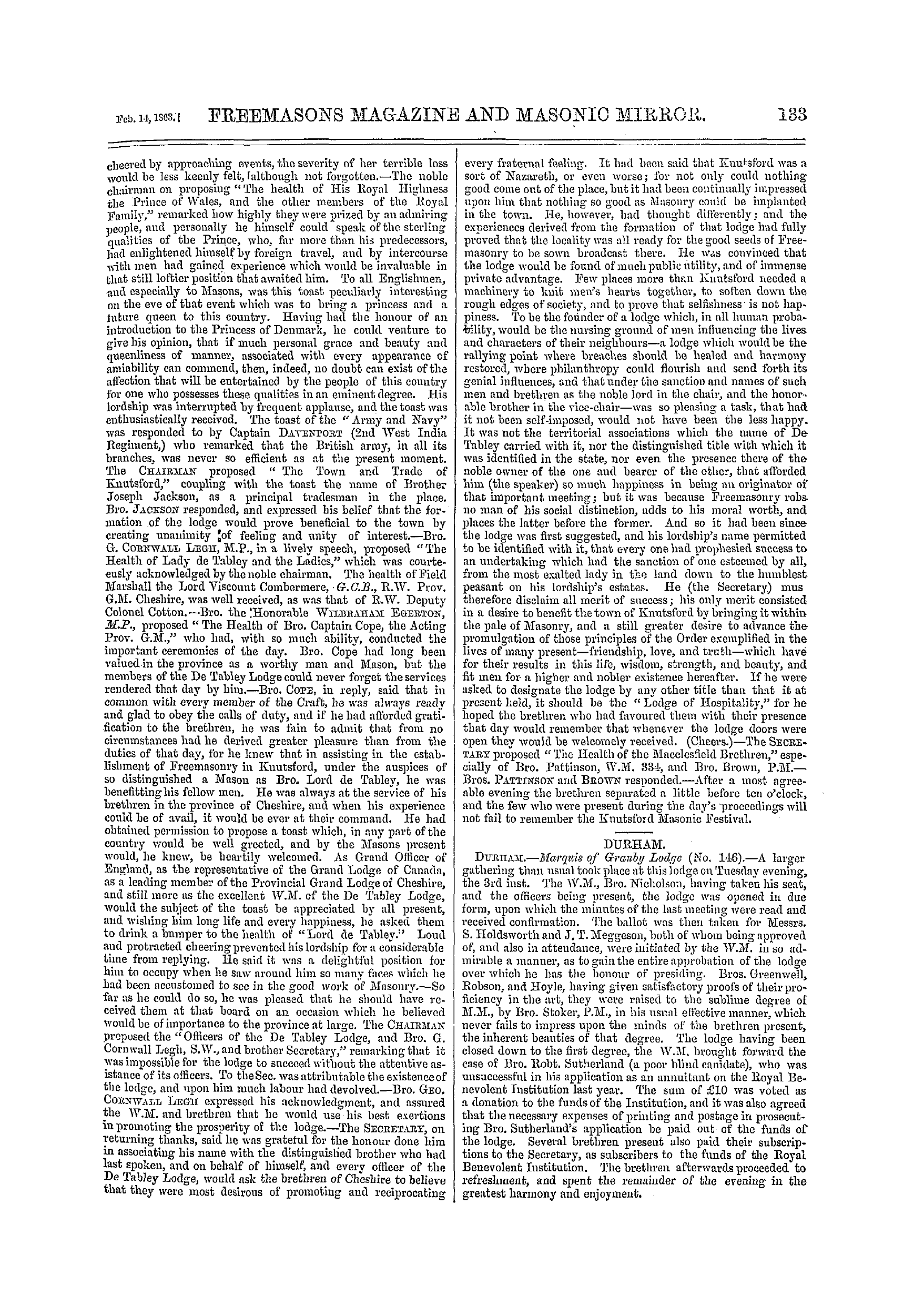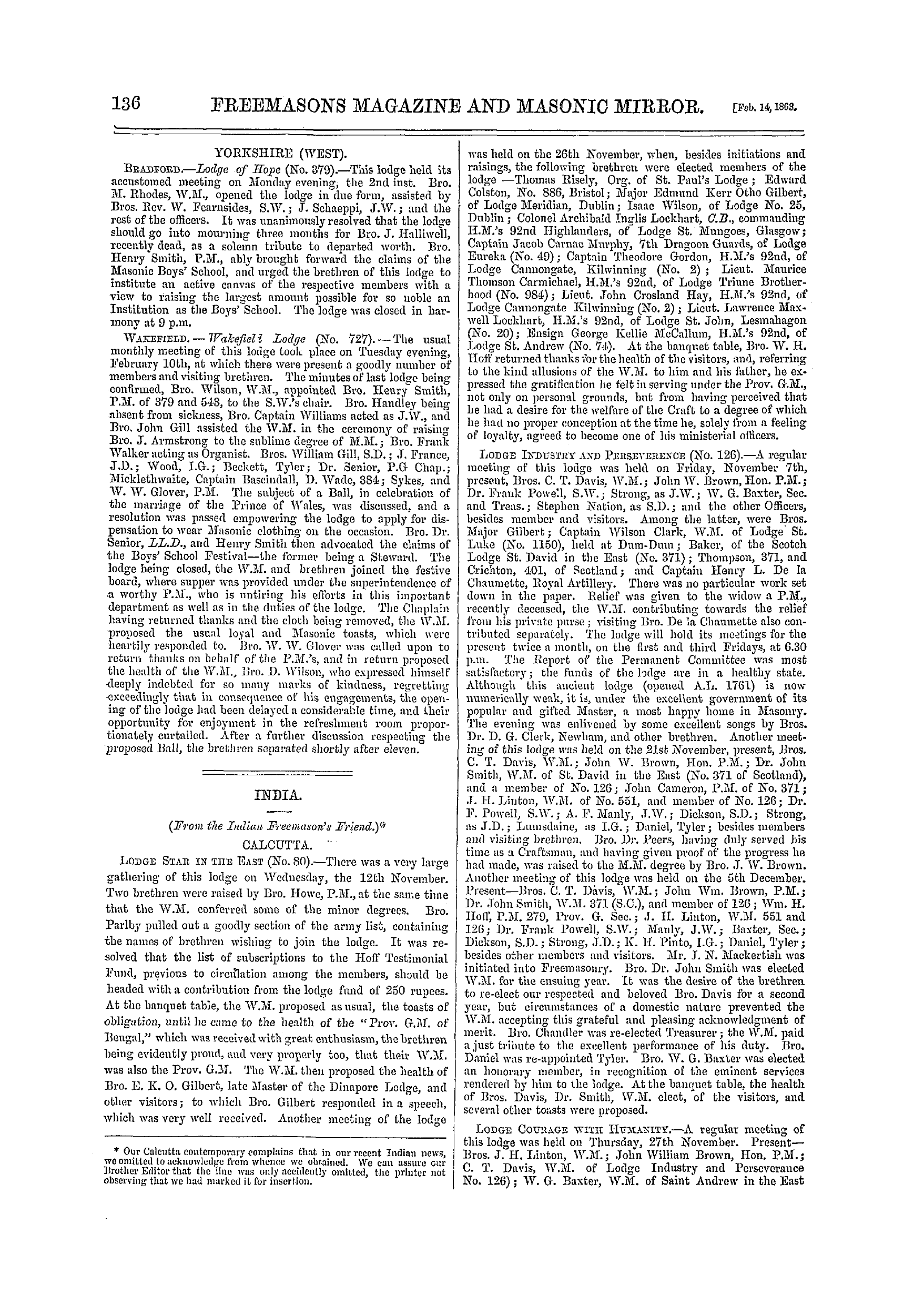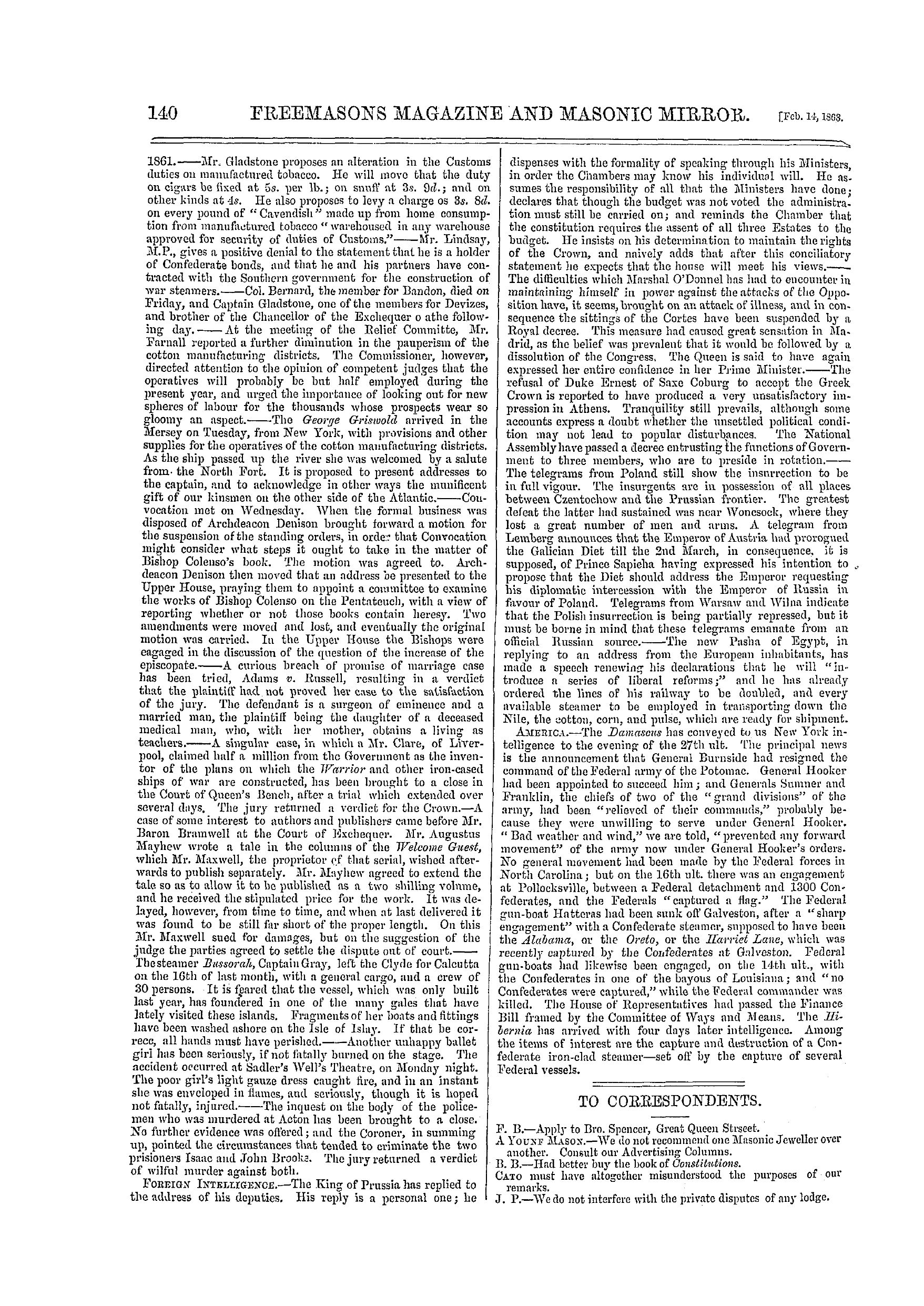Note: This text has been automatically extracted via Optical Character Recognition (OCR) software.
New Materials For The Life Of John Flaxman, R.A.
then in Somerset House , and made his observations , catalogue iu hand . When Chantrey approved , he was always emphatic in his approval : — " Eools admire , but -men of sense approve . " Against Elaxman's statue of Sir Joshua Reynolds ,
now in St . Paul ' s , then only a small-sized model , he has written "fine , " in large blacklead letters . The influence of this very fine statue on Chantrey may be traced in the very best of Chantrey ' s works . The story of the noble portrait of Elaxman , by John JacksonR . A . ( lucky manhe painted Canova as Avell
, , , and for Chantrey ) , Avas given to my father by George Agar Ellis , afterwards Lord Dover , in a long memorandum in his OAVD handwriting before me while I write . "In 1824 and 1825 , I think , Mr . Jackson painted for me the magnificent head of Elaxman —• probably his finest work—in which the chiaro-scuro
of Rembrandt is united Avith the colouring of the greatest masters in that art . The origin of the painting of this picture is as folloAvs -. —At the Academy dinner in , I think , 1824 , 1 sat at table exactly opposite Elaxman , aud was so much struck by the intelligence of his eyethe placid benignity of his
counte-, nance , and his venerable head , that I became anxious to see those characteristics worthily represented in painting . In going down stairs , I found myself next to Jackson , and said to him , 'I never was more struck in my life than by the countenance of Elaxman—you must paint him for me . ' " Lord Dover adds— "After
the great success of the portrait of Elaxman , I gave Jackson a commission to paint a head of Chantrey , which was not quite completed when he died . " Elaxman ' s letters , as autograph collectors know to their cost , are of rare occurrence . Here is one unknown to Elaxman ' s biographers : —
To Prince LToare , Fsq ., Secretary for Foreign Correspondence , Boyal Academy of Arts . London , 1803 . DEAR SIE , —The public monuments which I am doing , by order of the King and Parliament , are two ; one to the memory of Captain Montagueof the ship
, Montague , who fell in the naval engagement on the 1 st of June , 1794 , in which Admiral Earl HoAve commanded , and defeated the Erench fleet . The monument is to be insulated , and to stand under an arch in the naA e of Westminster Abbey , in such a manner that the spectator may walk round it .
Captain Montague rests on his sword , and stands on a pedestal adorned with naval flags . Victory , on a globe behind him , waves over his head the laurel crown which he did not live to wear . On the pedestal is a bas-relief , representing the engagement , and a lion on each 3 ide of the pedestal guards the basement . On
the back of the pedestal , under the trophy , is a basrelief of prisoners . The statue of the Captain is 7 feet 2 inches high , and the whole work will be 20 feet high from the ground . The other monument is to the memory of Admiral Earl Howe , commander-in-chief in the above
engagement , who , having rendered a series , of essential and brilliant services to his country , died at home in peace , at an advanced age , beloved and regretted , particularly by the navy . The principal figure is the earl in a naval uniform and boat-cloak , with a telescope in his right hand , resting on a rostrated pedestal on which
Britannia is seated , as the guardian both of herself and trophies . Eame Avrites his achievements in golden , letters on the pedestal . Victory ( without wings ) leans like a sister , on the shoulder of Eame , beholding with delight the record of her hero ' s deeds , while with her other hand she p laces the garland in the lap of Britannia . The British lion Avatches by the Earl's feet . This monument is to be placed in a distinguished situation in St . Paul's Cathedral . The statue of Earl
HoAve Avill be 7 feet 6 inches high ; the rest of the work Avill be magnificent in proportion , both in size and decoration . Concerning the bust of Ceres , of which you enquire , I have seen it and made drawings of it . When entire , it was a statue made of two blocks of marble : including the basket she supported on her headthe Avhole must have measured 16 feet in
, height ; but as a slight sketch will give a better idea than a laboured description , I have taken the liberty to trouble you Avith one * which you may , if you please , send to the President , of the Academy of Vienna , Avith my respectful compliments . The original is quite a ruinat you will perceive by the
, sketch . The face is gone . It is 6 feet 10 inches high , from the bottom of the girdle zone to the top of the basket . It is UOAV set up in the Public Library at Cambridge . I have examined the ancient authors , but have found no mention of the statue . Pliny says nothing of it ; Vitruvius says nothing of it ; nor
Pausanias . Strabo says the temple was erected by ' Ictinus , under Pericles . It is certainly a work of the time of Phidias , of an elevated beauty , and powerful execution , but I think it must be evident that Phidias could not have done all the works attributed to him , unless he had possessed as many hands as Briareus . — I am , dear sir , & c , " JOHN ELAXMAN . "
There is a passage in my father ' s Life of Elaxman which the following note from a careful and very severe corrector of slips of the pen in print will serve in some measure to set right : — " To Allan Cunningham , Esq ., " Molesey Grove , Hampton Court , 31 st MaJch , 1835 .
" DEAB SIE , —In re-reading your life of Elaxman , I observe , p . 311 , a statement and an anecdote which imply that Elaxman had not left Rome till after the irruption of Buonaparte into Italy . This , I think , must be a mistake . Your book does not , indeed , state the exact time of Elaxman ' s returnbut you say that he
, went in the spring of 1787 , and remained seven years , this would bring the return to 1794 . Now it was not till the autumn of 1795 that Buonaparte ' s name ever Avas heard of , and it was not till the spring of 179 ( 5 that he crossed the Alps . " If you will look at the passage , you will see that
this matter involves inaccuracy , and consequently the credit of the work ; and , as I cannot account for the mistake or anachronism , I have thought proper to mention it to you , that it may be corrected or explained in a neAV edition . —I am , dear sir , faithfully yours , " J . W . CEOKEE . "
On the receip t of this letter my father wrote to Miss Elaxman , and to what purpose the following answer Avill fully tell—
Note: This text has been automatically extracted via Optical Character Recognition (OCR) software.
New Materials For The Life Of John Flaxman, R.A.
then in Somerset House , and made his observations , catalogue iu hand . When Chantrey approved , he was always emphatic in his approval : — " Eools admire , but -men of sense approve . " Against Elaxman's statue of Sir Joshua Reynolds ,
now in St . Paul ' s , then only a small-sized model , he has written "fine , " in large blacklead letters . The influence of this very fine statue on Chantrey may be traced in the very best of Chantrey ' s works . The story of the noble portrait of Elaxman , by John JacksonR . A . ( lucky manhe painted Canova as Avell
, , , and for Chantrey ) , Avas given to my father by George Agar Ellis , afterwards Lord Dover , in a long memorandum in his OAVD handwriting before me while I write . "In 1824 and 1825 , I think , Mr . Jackson painted for me the magnificent head of Elaxman —• probably his finest work—in which the chiaro-scuro
of Rembrandt is united Avith the colouring of the greatest masters in that art . The origin of the painting of this picture is as folloAvs -. —At the Academy dinner in , I think , 1824 , 1 sat at table exactly opposite Elaxman , aud was so much struck by the intelligence of his eyethe placid benignity of his
counte-, nance , and his venerable head , that I became anxious to see those characteristics worthily represented in painting . In going down stairs , I found myself next to Jackson , and said to him , 'I never was more struck in my life than by the countenance of Elaxman—you must paint him for me . ' " Lord Dover adds— "After
the great success of the portrait of Elaxman , I gave Jackson a commission to paint a head of Chantrey , which was not quite completed when he died . " Elaxman ' s letters , as autograph collectors know to their cost , are of rare occurrence . Here is one unknown to Elaxman ' s biographers : —
To Prince LToare , Fsq ., Secretary for Foreign Correspondence , Boyal Academy of Arts . London , 1803 . DEAR SIE , —The public monuments which I am doing , by order of the King and Parliament , are two ; one to the memory of Captain Montagueof the ship
, Montague , who fell in the naval engagement on the 1 st of June , 1794 , in which Admiral Earl HoAve commanded , and defeated the Erench fleet . The monument is to be insulated , and to stand under an arch in the naA e of Westminster Abbey , in such a manner that the spectator may walk round it .
Captain Montague rests on his sword , and stands on a pedestal adorned with naval flags . Victory , on a globe behind him , waves over his head the laurel crown which he did not live to wear . On the pedestal is a bas-relief , representing the engagement , and a lion on each 3 ide of the pedestal guards the basement . On
the back of the pedestal , under the trophy , is a basrelief of prisoners . The statue of the Captain is 7 feet 2 inches high , and the whole work will be 20 feet high from the ground . The other monument is to the memory of Admiral Earl Howe , commander-in-chief in the above
engagement , who , having rendered a series , of essential and brilliant services to his country , died at home in peace , at an advanced age , beloved and regretted , particularly by the navy . The principal figure is the earl in a naval uniform and boat-cloak , with a telescope in his right hand , resting on a rostrated pedestal on which
Britannia is seated , as the guardian both of herself and trophies . Eame Avrites his achievements in golden , letters on the pedestal . Victory ( without wings ) leans like a sister , on the shoulder of Eame , beholding with delight the record of her hero ' s deeds , while with her other hand she p laces the garland in the lap of Britannia . The British lion Avatches by the Earl's feet . This monument is to be placed in a distinguished situation in St . Paul's Cathedral . The statue of Earl
HoAve Avill be 7 feet 6 inches high ; the rest of the work Avill be magnificent in proportion , both in size and decoration . Concerning the bust of Ceres , of which you enquire , I have seen it and made drawings of it . When entire , it was a statue made of two blocks of marble : including the basket she supported on her headthe Avhole must have measured 16 feet in
, height ; but as a slight sketch will give a better idea than a laboured description , I have taken the liberty to trouble you Avith one * which you may , if you please , send to the President , of the Academy of Vienna , Avith my respectful compliments . The original is quite a ruinat you will perceive by the
, sketch . The face is gone . It is 6 feet 10 inches high , from the bottom of the girdle zone to the top of the basket . It is UOAV set up in the Public Library at Cambridge . I have examined the ancient authors , but have found no mention of the statue . Pliny says nothing of it ; Vitruvius says nothing of it ; nor
Pausanias . Strabo says the temple was erected by ' Ictinus , under Pericles . It is certainly a work of the time of Phidias , of an elevated beauty , and powerful execution , but I think it must be evident that Phidias could not have done all the works attributed to him , unless he had possessed as many hands as Briareus . — I am , dear sir , & c , " JOHN ELAXMAN . "
There is a passage in my father ' s Life of Elaxman which the following note from a careful and very severe corrector of slips of the pen in print will serve in some measure to set right : — " To Allan Cunningham , Esq ., " Molesey Grove , Hampton Court , 31 st MaJch , 1835 .
" DEAB SIE , —In re-reading your life of Elaxman , I observe , p . 311 , a statement and an anecdote which imply that Elaxman had not left Rome till after the irruption of Buonaparte into Italy . This , I think , must be a mistake . Your book does not , indeed , state the exact time of Elaxman ' s returnbut you say that he
, went in the spring of 1787 , and remained seven years , this would bring the return to 1794 . Now it was not till the autumn of 1795 that Buonaparte ' s name ever Avas heard of , and it was not till the spring of 179 ( 5 that he crossed the Alps . " If you will look at the passage , you will see that
this matter involves inaccuracy , and consequently the credit of the work ; and , as I cannot account for the mistake or anachronism , I have thought proper to mention it to you , that it may be corrected or explained in a neAV edition . —I am , dear sir , faithfully yours , " J . W . CEOKEE . "
On the receip t of this letter my father wrote to Miss Elaxman , and to what purpose the following answer Avill fully tell—







